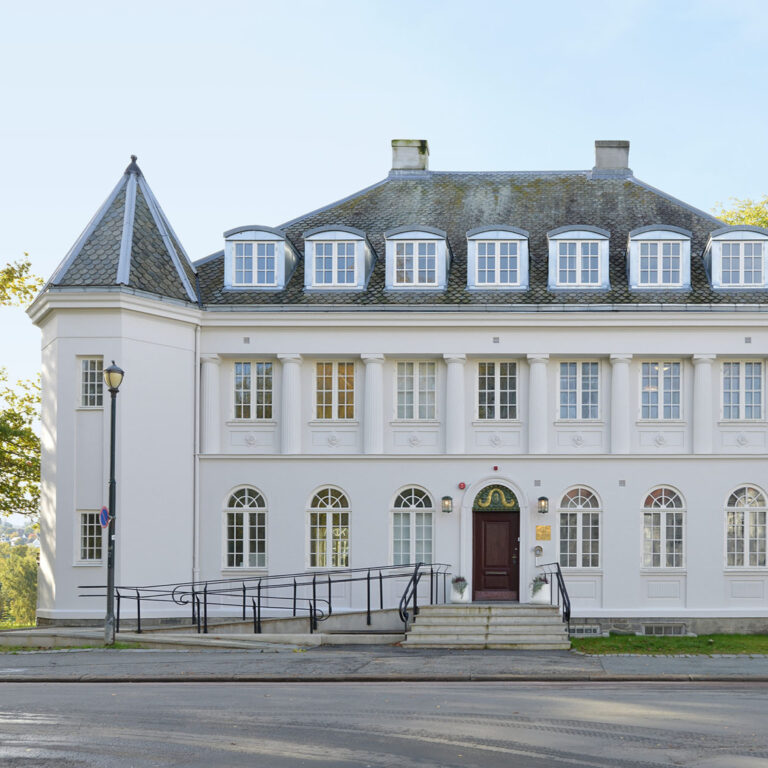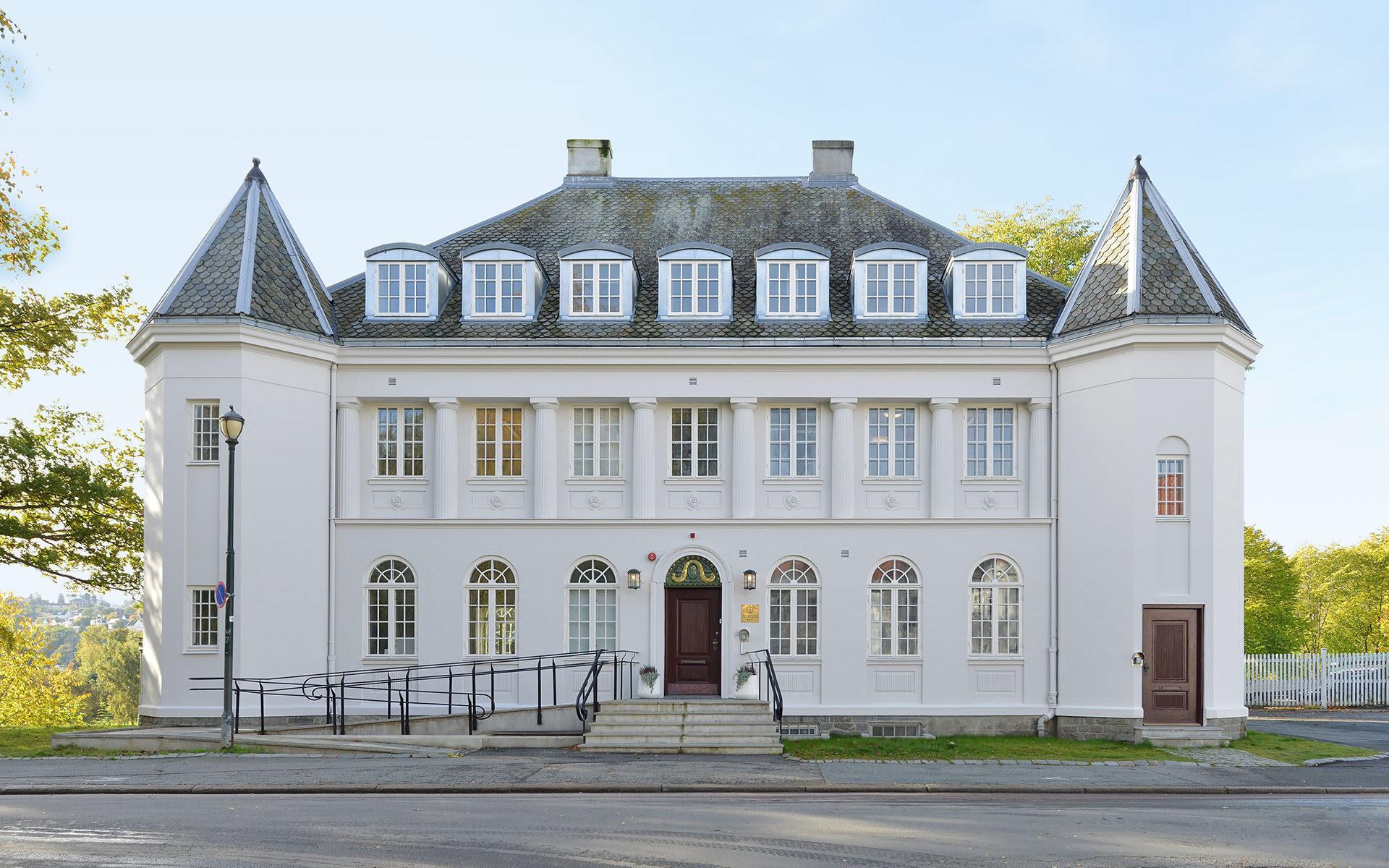27 august 2023 | 15 minutes

Norsk for Beginners is a podcast aimed at beginners of Norwegian (A1-A2). The episodes are structured in two parts: One Norwegian speaking part and the second in English, explaining the Norwegian part and examining some Norwegian vocabulary used in the episode. I speak Norwegian in a clear, slow and deliberate manner, perfect for beginners. Get some listening practice by listening to “Norsk for Beginners”!
Email: Laernorsknaa@gmail.com
Transcript: https://laernorsknaa.com/7-3-the-enlightenment-in-norway-the-18th-century/
Support me here –>
Patreon: https://www.patreon.com/laernorsknaa
Donasjon (Paypal): Doner (paypal.com)
For more content to learn Norwegian –>
YouTube: https://www.youtube.com/channel/UCxdRJ5lW2QlUNRfff-ZoE-A
Norwegian Enlightenment began in the early 18th century and lasted until the early 19th century. It was a period of significant changes in Norway. New ideas arrived in Norway from other European countries. New plants, like the potato, came from South America. People enjoyed better health and longer lives. This was a period marked by the ideals and values of the Enlightenment, although the Norwegian Enlightenment was not identical to the French. But what was the Enlightenment really?
The Enlightenment was a period in the 18th century when intellectuals in Europe, led by French intellectuals, began advocating for science, freedom, and tolerance. The French philosophers Montesquieu, Voltaire, and Rousseau are especially well-known. In Norway, the Enlightenment was led by priests and bishops.
Priests played a central role as intellectuals in Norway. They formed networks for the collection and dissemination of knowledge. Johan Ernst Gunnerus, the bishop of Trondheim, was particularly important. He was a skilled network builder for Norwegian science and gathered a wealth of historical and scientific knowledge in Norway. Priests also played a crucial role in spreading knowledge in agriculture. This is how the potato was introduced to Norway. Priests, who earned the nickname ”potato priests,” traveled around Norway and convinced farmers to plant potatoes from South America. Potatoes are highly resilient, and many in Norway had more to eat because of them.

Episode’s Transcript
Heihei og velkommen til en ny episode av podkasten. In this episode, we will talk about the Enlightenment in Norway. The Enlightenment is a name given to the 18th century by the contemporaries. It was a time of development, growth, new ideas, and new political arrangements. But how enlightened was it really? We will focus on Norway’s part in this. In Norwegian, “the Enlightenment” is “Opplysningstiden”.
Opplysningstiden
Norsk opplysningstid begynte tidlig på 1700-tallet og varte fram til tidlig på 1800-tallet. Det var en tid med betydelige endringer i Norge. Nye ideer kom til Norge fra andre europeiske land. Nye planter, som poteten, kom fra Sør-Amerika. Folk fikk bedre helse og levde lenger. Dette var en periode som ble preget av opplysningens idéer og verdier, selv om den norske opplysningstiden ikke var lik den franske. Men hva var egentlig opplysningstiden?
Opplysningstiden var en periode på 1700-tallet da intellektuelle i Europa, ledet av franske intellektuelle, begynte å argumentere for vitenskap, frihet og toleranse. De franske opplysningsmennene Montesquieu, Voltaire og Rousseau er spesielt kjente. I Norge ble opplysningstiden ledet av prester og biskoper.
Prester spilte en sentral rolle som opplysningsmenn i Norge. De dannet nettverk for innsamling og formidling av kunnskap. Johan Ernst Gunnerus, biskopen i Trondheim, var spesielt viktig. Han var en god nettverksbygger for norsk vitenskap og samlet mye historisk og naturvitenskapelig kunnskap i Norge. Prestene var også viktige med å spre kunnskap i jordbruket. Det var slik poteten ble innført i Norge. Prester, som fikk kallenavnet potetprestene, reiste rundt i Norge og fikk bønder til å plante poteten fra Sør-Amerika. Poteten tåler veldig mye og mange i Norge fikk mer å spise på grunn av poteten.
Opplysningstiden i Norge så også en forbedring i helse og levealder. I denne perioden var det en stor økning i forventet levealder. I 1750 var den gjennomsnittlige forventede levealderen i Norge kun 35 år. Dette betydde ikke at folk døde da de var 35 år gamle, men heller at det var så høy barnedødelighet I tillegg døde mange av sykdommer som pest. Men mot slutten av 1700-tallet og begynnelsen av 1800-tallet begynte levealderen å stige. Dette skyldtes blant annet bedre forståelse av helse, hygiene, og kosthold. Det ble etablert sykehus, apoteker og jordmorutdanning.
En viktig faktor bak den økende levealderen og befolkningsveksten var fallet i dødeligheten. Pestepidemiene som hadde herjet tidligere, forsvant fra Europa. Andre epidemier, som flekktyfus, dysenteri og kopper, ble gradvis mindre katastrofale og forsvant nesten helt etter 1815. Dette gjorde at folketallet økte betydelig i løpet av denne perioden.
Vekst i norsk økonomi var også en del av opplysningstiden i Norge. Det var en kraftig vekst i den norske eksporten, spesielt under perioder med internasjonale konflikter som Danmark-Norge ikke var involvert i. Dette var fordi de krigende landene trengte mat, metaller og treverk som de kunne importere fra Norge. Eksportnæringer som fiske, trelast, jern og kobber var viktige for Norge. Spesielt trelasthandelen var viktig. Trelasthandelen blomstret i andre halvdel av 1700-tallet og mye ble solgt til England. England har ikke så mye tre og for å bygge båter trengte de tre fra Norge. Mange bønder kunne tjene litt ekstra med å være en del av trelastnæringen.
Men opplysningstiden var ikke radikal i Norge og Danmark. Politisk var det veldig lite diskusjon. Danmark-Norge var et enevelde. Det vil si at kongen hadde all makt. Det var nesten ingen i Danmark-Norge som offentlig kritiserte eller utfordret kongemakten. Politisk var det derfor lite som endret seg i Norge under opplysningstiden. Og det var heller ikke en tid for fri debatt og åpenhet.
Kort oppsummert var norsk opplysningstid en tid preget av økonomisk vekst, helseforbedringer, og økt kunnskap og opplysning. Det var også en tid preget av kulturell utvikling som satte grunnlaget for den moderne norske nasjonen. Den økende levealderen og befolkningsveksten gjorde Norge i stand til å møte de utfordringene og endringene som skulle komme på 1800-tallet. Likevel var ikke opplysningstiden like tydelig i Norge som mange andre europeiske land, og heller ikke like radikal.
The Age of Enlightenment
Norwegian Enlightenment began in the early 18th century and lasted until the early 19th century. It was a period of significant changes in Norway. New ideas arrived in Norway from other European countries. New plants, like the potato, came from South America. People enjoyed better health and longer lives. This was a period marked by the ideals and values of the Enlightenment, although the Norwegian Enlightenment was not identical to the French. But what was the Enlightenment really?
The Enlightenment was a period in the 18th century when intellectuals in Europe, led by French intellectuals, began advocating for science, freedom, and tolerance. The French philosophers Montesquieu, Voltaire, and Rousseau are especially well-known. In Norway, the Enlightenment was led by priests and bishops.
Priests played a central role as intellectuals in Norway. They formed networks for the collection and dissemination of knowledge. Johan Ernst Gunnerus, the bishop of Trondheim, was particularly important. He was a skilled network builder for Norwegian science and gathered a wealth of historical and scientific knowledge in Norway. Priests also played a crucial role in spreading knowledge in agriculture. This is how the potato was introduced to Norway. Priests, who earned the nickname “potato priests,” traveled around Norway and convinced farmers to plant potatoes from South America. Potatoes are highly resilient, and many in Norway had more to eat because of them.
The Enlightenment in Norway also saw improvements in health and life expectancy. During this period, there was a significant increase in life expectancy. In 1750, the average life expectancy in Norway was only 35 years. This did not mean that people died at the age of 35, but rather that there was high child mortality. Additionally, many died from diseases like the plague. However, towards the end of the 18th century and the beginning of the 19th century, life expectancy began to rise. This was due in part to a better understanding of health, hygiene, and nutrition. Hospitals, pharmacies, and midwifery training were established as well.
A significant factor behind the increasing life expectancy and population growth was the decline in mortality. Plague epidemics that had ravaged earlier times disappeared from Europe. Other epidemics, like typhus, dysentery, and smallpox, gradually became less catastrophic and nearly disappeared after 1815. This led to a significant increase in the population during this period.
Economic growth was also part of the Enlightenment in Norway. There was a strong growth in Norwegian exports, especially during periods of international conflicts in which Denmark-Norway was not involved. This was because the warring countries needed food, metals, and timber that they could import from Norway. Export industries such as fishing, timber, iron, and copper were important for Norway. Timber trade, in particular, thrived in the second half of the 18th century, with much of it being sold to England. England didn’t have as much timber, and they needed Norwegian timber to build ships. Many farmers could earn extra income by being part of the timber industry.
However, the Enlightenment was not radical in Norway and Denmark. There was very little political discussion. Denmark-Norway was an absolute monarchy, meaning the king had all the power. There were almost no public critics or challenges to the monarchy in Denmark-Norway. Politically, therefore, very little changed in Norway during the Enlightenment, and it was not a time of free debate and openness.
In Summary: Norwegian Enlightenment was a period characterized by economic growth, improvements in health, increased knowledge and enlightenment, and cultural development that laid the foundation for the modern Norwegian nation. The increasing life expectancy and population growth enabled Norway to meet the challenges and changes that would come in the 19th century. Nevertheless, the Enlightenment was not as pronounced in Norway as in many other European countries, and it was not as radical.
Vocabulary
| Norwegian Word | English Translation | Example Sentence |
| Opplysningstid | Enlightenment | Norsk opplysningstid begynte tidlig på 1700-tallet. |
| Preget av | Characterized by | Dette var en periode som ble preget av opplysningstidens tanker og ideer. |
| Prester | Priests | I Norge ble opplysningstiden ledet av prester. |
| Biskoper | Bishops | Johan Ernst Gunnerus, biskopen i Trondheim, var en svært viktig person i norsk opplysningstid. |
| Formidling | Dissemination | De dannet nettverk for innsamling og formidling av kunnskap. |
| Kunnskap | Knowledge | Han samlet mye historisk og naturvitenskapelig kunnskap. |
| Jordbruk | Agriculture | Prestene var også viktige med å spre kunnskap i jordbruket. |
| Epidemier | Epidemics | Andre epidemier, som flekktyfus, dysenteri og kopper fortsatte å drepe folk i Norge. |
| Folketallet | Population | Bedre helse gjorde at folketallet økte betydelig i Norge på 1700-tallet. |
| Eksportnæringer | Export Industries | De viktigste eksportnæringene i Norge var fiske, trelast, jern og kobber. |
| Trelasthandel | Timber Trade | Trelasthandelen blomstret i Norge i andre halvdel av 1700-tallet. |
| Enevelde | Absolute monarchy | Danmark-Norge var et enevelde. Det vil si at kongen hadde all makt. |
| Utfordret | Challenged | Det var nesten ingen i Danmark-Norge som offentlig kritiserte eller utfordret kongemakten. |
| Fri debatt | Free Debate | Og det var heller ikke en tid for fri debatt og åpenhet. |
| Kort oppsummert | In brief | Kort oppsummert var norsk opplysningstid en tid preget av økonomisk vekst, fokus på kunnskap og forbedringer i helse. |

Love this podcast; it has been a great help in my learning of Norwegian.
I have a question: Why is it “en tid” instead of “ei tid”? In the other lessons, you seem to treat the word as feminine. I’ve read that using masculine forms for feminine nouns is more common in written form and makes the register more formal. Or is it perhaps simply convention when talking about particular topics, like the Enlightenment?
I usually use the feminine, but sometimes I forget. There is therefore a mix of feminine and masculine forms, although I try to be consistent with the feminine form.